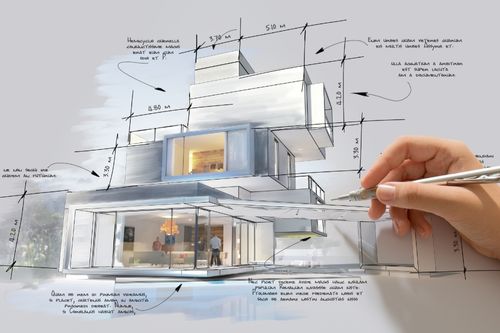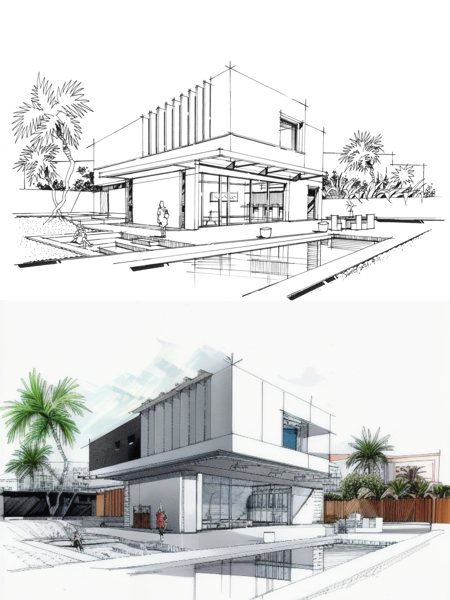Exactly How CDA Architects Provide Cutting-Edge Solutions for Lasting Design
Exactly How CDA Architects Provide Cutting-Edge Solutions for Lasting Design
Blog Article
The Crucial Duty of an Architect in Forming Lasting Urban Environments for Future Generations
The role of an architect in crafting lasting metropolitan atmospheres is increasingly pivotal in reacting to the difficulties of climate change and urbanization. By seamlessly incorporating environmental principles right into their styles, designers not just boost the aesthetic and functional top quality of metropolitan areas but additionally address pressing issues such as power effectiveness and social equity.
Understanding Lasting Urban Style
Sustainable city style integrates environmental principles with city planning to develop atmospheres that are not only livable yet likewise resilient. This technique emphasizes the relevance of integrating all-natural systems right into the metropolitan textile, making sure that development fulfills the needs of the here and now without compromising the capacity of future generations to meet their very own demands. Secret components of sustainable city style include reliable land usage, the promo of biodiversity, and the assimilation of green rooms, every one of which add to improved lifestyle for locals.
In addition, sustainable metropolitan layout focuses on the reduction of the metropolitan warmth island effect, enhanced air top quality, and effective stormwater administration. It urges making use of sustainable sources and energy-efficient structure practices, which substantially reduced carbon impacts. Additionally, lasting city layout fosters social equity by creating easily accessible public rooms and advertising mixed-use developments that cater to diverse populations.
With thoughtful planning and ingenious style methods, lasting city settings can boost area strength versus environment modification while promoting economic advancement. This alternative method not only addresses immediate urban challenges but also lays the groundwork for much healthier, extra lasting cities for generations ahead.
Secret Duties of Engineers
Designers play a critical role fit sustainable city settings by equating style principles right into substantial structures and areas. Their obligations include a broad range of activities that contribute to the total success of city layout jobs.
Firstly, designers conduct thorough website evaluations to understand the ecological, social, and social context of their projects. This fundamental understanding informs their layout choices, guaranteeing that structures balance with their surroundings. They additionally take part in collaborative procedures with stakeholders, including city organizers, engineers, and the area, promoting a comprehensive technique to urban advancement.
Additionally, engineers are tasked with developing designs that maximize energy performance, resource preservation, and functionality. They need to comply with regional zoning regulations, developing codes, and sustainability qualifications, guaranteeing conformity while pushing the limits of innovation.
Additionally, engineers are responsible for taking care of the style procedure, coordinating with different specialists throughout the building stage to make certain that the vision is recognized properly (cda architects). Inevitably, their role is not exclusively concerning looks; it is about creating durable, flexible rooms that boost the quality of life for present and future generations, preparing for lasting city living
Innovative Materials and Techniques

Furthermore, developments in technology have actually caused the development of high-performance products, such as protected concrete forms (ICFs) and photovoltaic or pv glass, which add to energy preservation and harness sustainable power. Methods such as passive solar layout and eco-friendly roofs better exemplify how design can harmonize with all-natural systems, decreasing dependence over at this website on synthetic home heating and cooling.
Moreover, the combination of smart materials, which adjust to environmental adjustments, provides encouraging opportunities for boosting building efficiency. These products can respond to temperature level variations or moisture degrees, maximizing comfort and sustainability.
Inevitably, the tactical choice and application of cutting-edge materials and methods equip designers to develop urban areas that are not just useful and aesthetically pleasing yet additionally resistant and environmentally accountable, ensuring a sustainable future for generations ahead. cda architects.
Community Engagement and Partnership
The success of innovative materials and strategies in lasting metropolitan architecture is significantly enhanced by energetic neighborhood engagement and collaboration. Engineers need to acknowledge that the built setting exceptionally impacts the lives of local homeowners, making it critical to entail them in the investigate this site style procedure. Involving the community cultivates a feeling of ownership and liability, making sure that developments not just satisfy visual and practical needs yet likewise mirror the worths and goals of those that occupy them.

Effective community engagement likewise aids in focusing on social equity within city advancement. By thinking about the voices of marginalized populaces, engineers can create spaces that are inclusive and equitable. By doing this, community interaction and partnership end up being important to accomplishing genuinely lasting metropolitan atmospheres that serve the requirements of present and future generations.
Future Patterns in Sustainable Design
An arising focus on adaptive reuse and circular economy concepts is readied to redefine the landscape of lasting design. As cities come to grips with enhancing population thickness and ecological difficulties, designers are increasingly transforming to approaches that maximize existing structures instead of seeking brand-new builds. This technique not only preserves social heritage however also significantly reduces source usage and waste.
Additionally, advancements in modern technology are shaping future trends in lasting design. The integration of clever materials and structure systems enables for real-time energy monitoring, improving efficiency and lowering carbon footprints. Innovations such as environment-friendly roofing systems, living wall surfaces, and energy-generating exteriors are becoming typical methods, further advertising ecological equilibrium within urban settings.
Furthermore, a change towards biophilic style is gaining grip, emphasizing the link between nature and human health. By incorporating all-natural elements, designers develop spaces that cultivate mental health and wellness while advertising biodiversity.
Conclusion
Finally, architects are critical beforehand sustainable metropolitan environments through their experience in style, cutting-edge materials, and area interaction. By focusing on power efficiency and source preservation, these professionals contribute to the development of resistant urban spaces that satisfy the demands of existing and future generations. The integration of investigate this site environmental principles not just boosts livability but also promotes social equity, making sure growths reverberate with the values and goals of the neighborhoods they offer.
Report this page